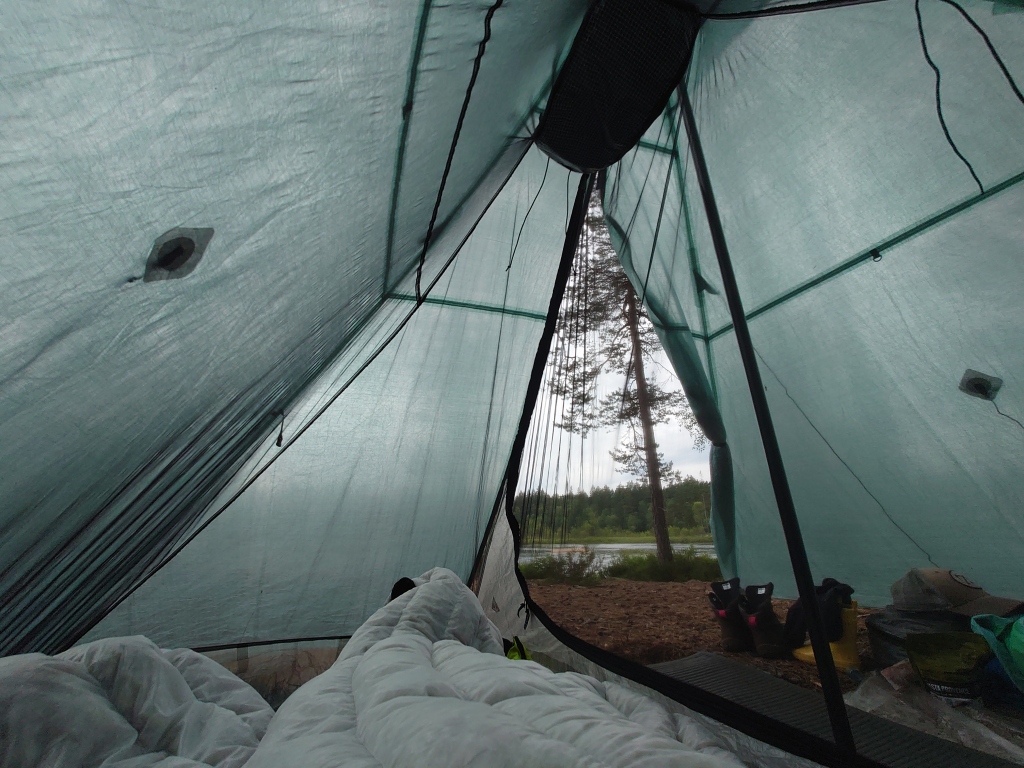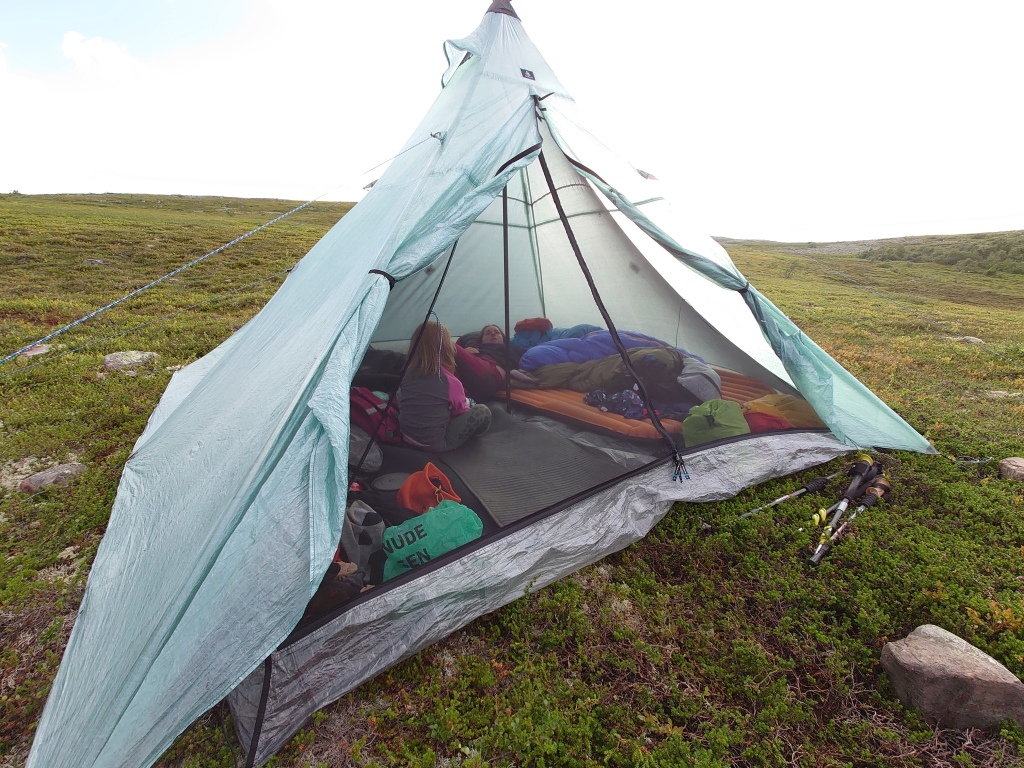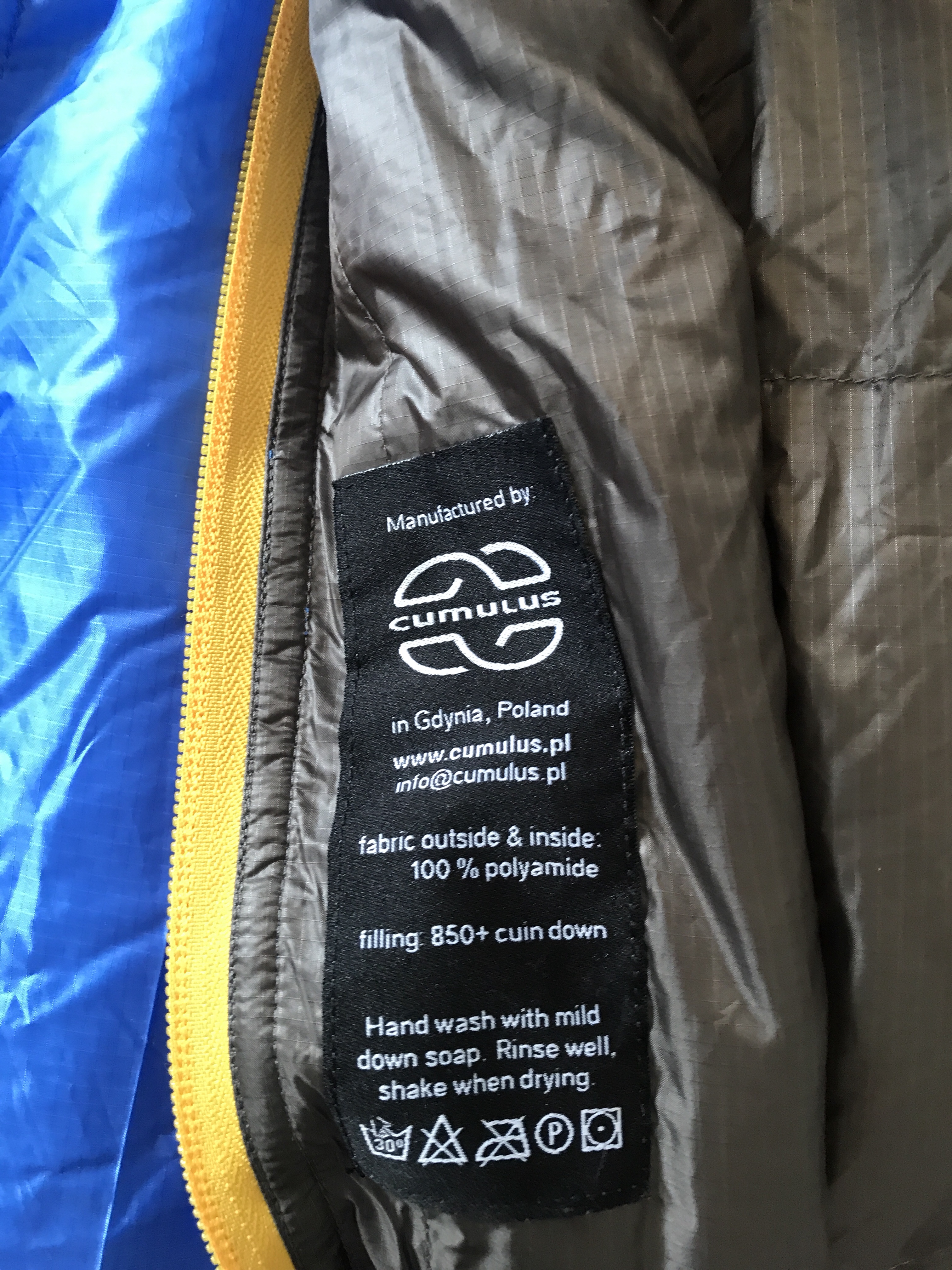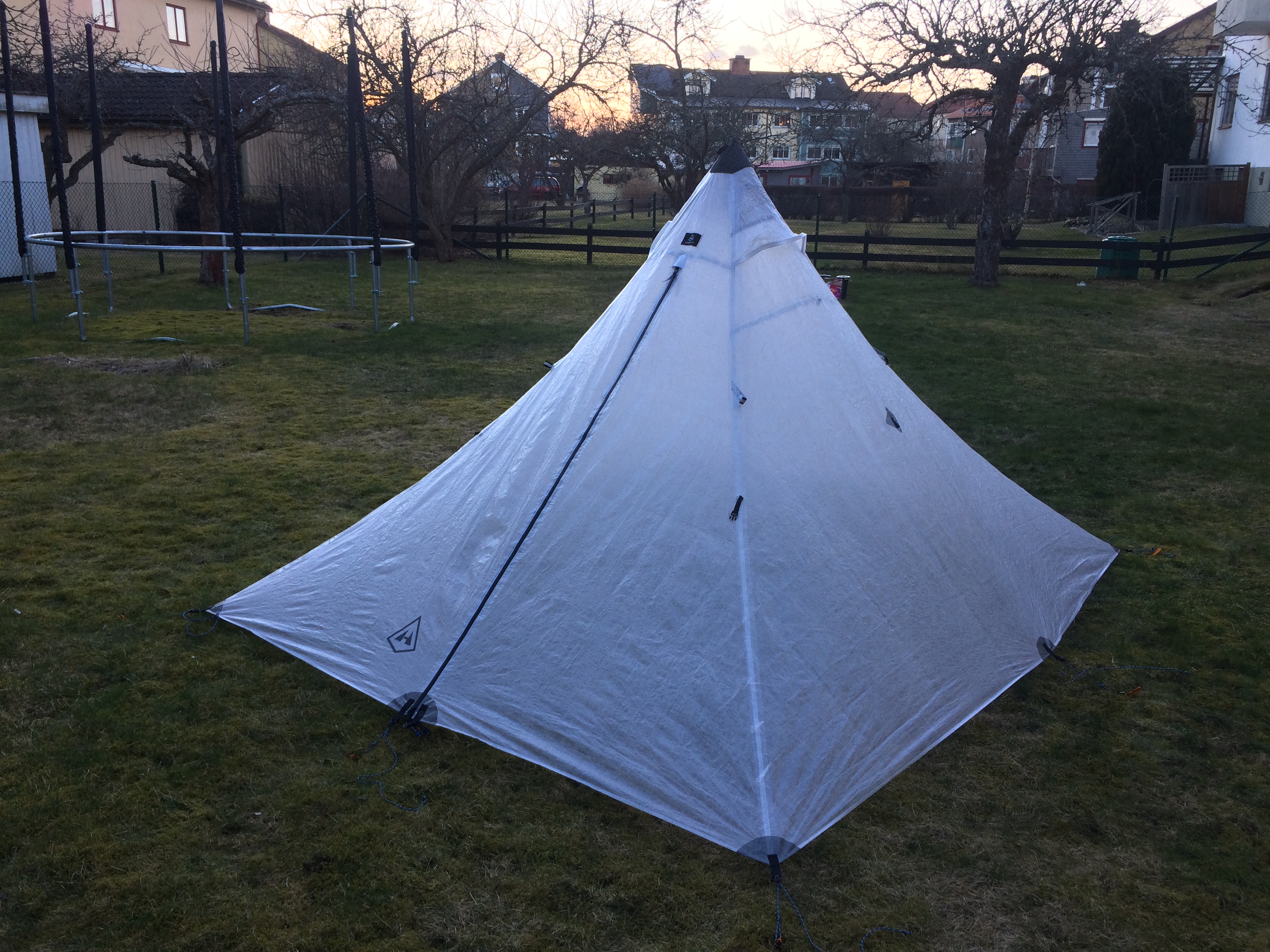(Disclaimer: Below list contains affiliate links, which means I get a small commission for purchases made through the links. The gear is bought with my own money though and I have not been asked to review the gear.)

I’m going to give a review of my Hyperlite Mountain Gear 4, with the full- and the half inner and go through my likes and dislikes with it. While it’s a great tent, it still has its downsides. I’ve owned the tent for a little less than a year, and used it both below and above the treeline and I have used a lot of different tents before this one.
For those who don’t know, the HMG Ultamid is made out of Dyneema composite fabric, formerly known as Cuben Fiber. The material was originally made to make sails for sail racing boats, but have been widely used by parts of the outdoor business. The pros, as opposed to sil nylon which is the standard material used in tents, is that it is both lighter and stronger. It doesn’t stretch, sag when wet or soak, and is easier to just shake or wipe off moisture. The cons however is that it is less resistant to abrasions and folding. I’ve read that you can expect almost twice the amounts of nights a Sil tent will take before worn out, compared to a DCF tent since the material will wear quicker. Another downside is price. The material itself is expensive, thus making the gear expensive.
I’ve owned gear from Hyperlite Mountain Gear since 2017, and before the Ultamid 4 I had the Ultamid 2. I have the backpack Southwest 4400, pack pods and a stuff sack pillow, and I’m generally happy with the gear I have from them. I’ve used a lot of tent before; Bergans Compact tunnel tent, Hilleberg Enan, Niak and Staika, Luxe Sil Hex Peak, Twin Peak and Tentipi Olivin Light, Olivin BP and Safir 5 BP. My reason for buying the Ultamid 4 was to have one tent that was light enough for solo use, but still large enough for family camping.
The Ultamid is a so called Mid, or Pyramid shelter. It’s easily erected. Lay it on the ground, put the pegs in the corners and make sure the corners are in a 90⁰ angle. I also recommend securing one guy line to a backpack too, to mitigate the risk of it blowing away while you are setting it up or taking it down.
Insert the center pole and adjust the guy lines. Tighten them a little bit at each corner to get even tension and then go around again and tighten them some more if necessary. The half inner gets secured to the fly with hooks, and with pegs in the corners, and then secured to the top with a carabiner.
The tent, with the material and shape, is made to withstand much of what nature can throw at it. I don’t know how many times I’ve heard or read ‘bombproof’ in tent reviews, and while I don’t plan to do any camping in the conflict areas of Syria any time soon, it do tell some about whats expected of it.

So whats my impression of it then? I’ve had both the Ultamid 4 and the 2 on both low land trails and in the mountains above the treeline. And it do handle wind very well. Despite not having a solid inner it doesn’t get particularly breezy inside, even in hard wind. When it comes to quality it’s OK. It’s not Hilleberg quality, and while I didn’t have any issues with the 2, I had water seeping through the seams and dropping down in my face at night in the Ultamid 4. HMG refunded the shipping cost and sent me a few meters of DCF tape, and I taped up the weak spots. One area in the top was supposed to be covered with tape, but the tape there didn’t cover the seams. This made it possible for water to seep through, and on two trips I frequently had water dropping down on my face at night. I have a lot of other gear from HMG, and I had the Ultamid 2 without any issues, so I could have just gotten a bad one, since it was made when HMG where overwhelmed with orders during peak Covid in late 2020/early 2021.




When it comes to details it has 8 peg out points along the perimeter, and 7 guy line points half way up. You get a lot of guy line with the tent, but you have to cut it and tie it by yourself. I cut mine in a length of roughly 4 meters, and use a Tautline Hitch at the end, to easily be able to tension the guy lines. With all guy lines pegged, the tent should be able to take quite a beating from the elements. But hard wind will put a lot of pressure on the center pole.
I have a carbon fiber pole from Ruta Loca. It’s lightweight, at 266 grams. I can’t say how well it would fair in extreme weather, but there is also the option to strap two hiking poles together with the HMG pole straps. I use aluminum 4-season poles from Black Diamond, and with a fair share of the poles overlapping the center pole gets really strong.
The tent itself weighs 774 grams for the fly with guy lines, 539 grams for the half inner and 823 grams for the full inner. My pegs weighs 305 gram, and I have a mix of MSR groundhogs, generic Y-pegs and nails.
But the biggest issue probably is the price. In USA the price is $890-$975 for fly, $405 for the half inner and $510 for the full inner. In Europe it’s even more expensive with 1141€-1238€ for the fly, 486€ for the half inner and 624€ for the full inner.
Another downside with a Mid with a full inner is that in a downpour it’s hard to not get a lot of water inside the tent while entering and exiting. When I camped with my daughter with the full inner in 12 hours of torrential rain it was a pain.
But do I like it?
I do, despite some downsides I feel that it’s the best compromise there is for my needs, which is lightweight, large enough for four persons but light enough for one to carry. And despite the downsides with the full inner in rain I do really like the modular approach. I think it really shines when used as a palatial 2-person tent. With the half inner as a fairly large area secured from bugs and the other half as a vestibule with a groundsheet, for cooking and gear. And with only the half inner you could enter and exit without having a swimming pool in your inner tent.
Do I recommend it?
It’s not a tent for everyone. Is a bit more complex to set up than a regular tunnel- or dome tent, it’s very expensive and DCF is bulky and not very resistant to abrasion. But if you prioritize having a large tent that can handle rough weather to a really low weight I do recommend it. For me, the benefits outweighed the downsides, and I would rate it a 4 out of 5 stars.




































